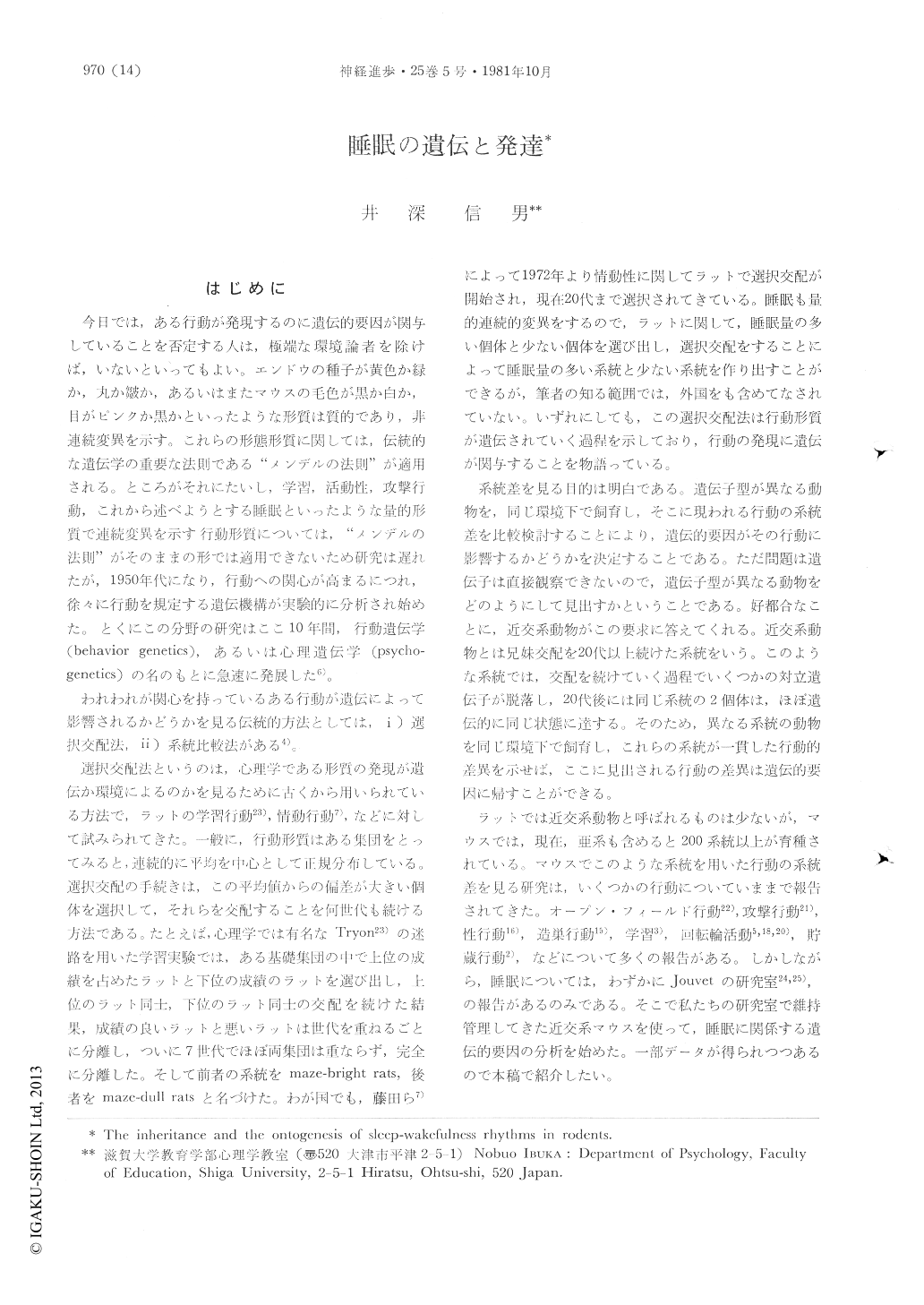Japanese
English
- 有料閲覧
- Abstract 文献概要
- 1ページ目 Look Inside
はじめに
今日では,ある行動が発現するのに遺伝的要因が関与していることを否定する人は,極端な環境論者を除けば,いないといってもよい。エンドウの種子が黄色か緑か,丸か雛か,あるいはまたマウスの毛色が黒か白か,目がピンクか黒かといったような形質は質的であり,非連続変異を示す。これらの形態形質に関しては,伝統的な遺伝学の重要な法則である"メンデルの法則"が適用される。ところがそれにたいし,学習,活動性,攻撃行動,これから述べようとする睡眠といったような量的形質で連続変異を示す行動形質については,"メンデルの法則"がそのままの形では適用できないため研究は遅れたが,1950年代になり,行動への関心が高まるにつれ,徐々に行動を規定する遺伝機構が実験的に分析され始めた。とくにこの分野の研究はここ10年間,行動遺伝学(behavior genetics),あるいは心理遺伝学(psychogenetics)の名のもとに急速に発展した6)。
われわれが関心を持っているある行動が遺伝によって影響されるかどうかを見る伝統的方法としては,i)選択交配法,ii)系統比較法がある4)。
The article consists of two parts. In Part I the influence of genetic factors on sleep-wakefulness rhythms and in Part II the ontogenesis of circadian sleep-wakefulness rhythms were reviewed and discussed with some special emphasis on the experiments perfomed by the present author. The main findings and discussions were as follows;
In Part I.
1. Strain differences were found among the BALB/c, the C57/6, the C3H/He and the DBA/2 in the structure of sleep.

Copyright © 1981, Igaku-Shoin Ltd. All rights reserved.


